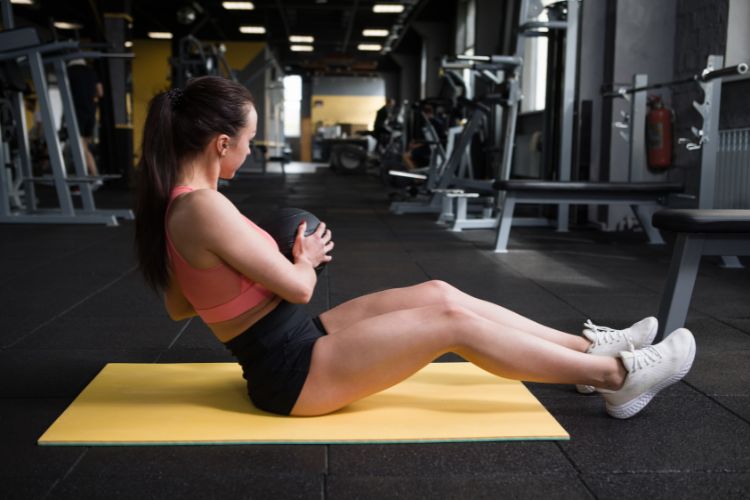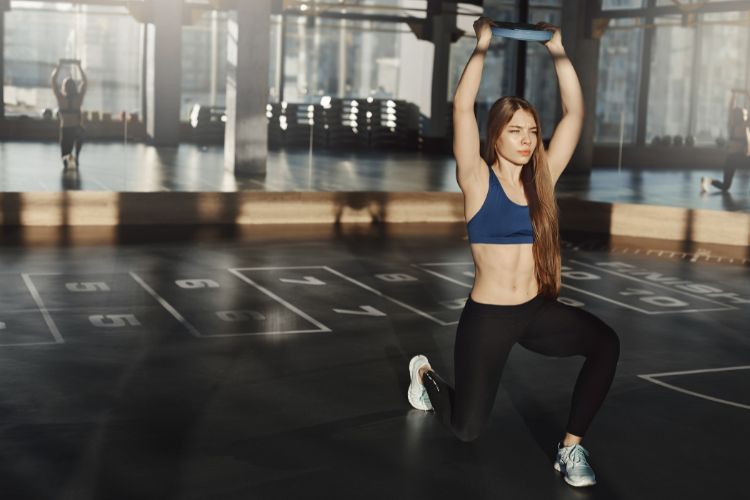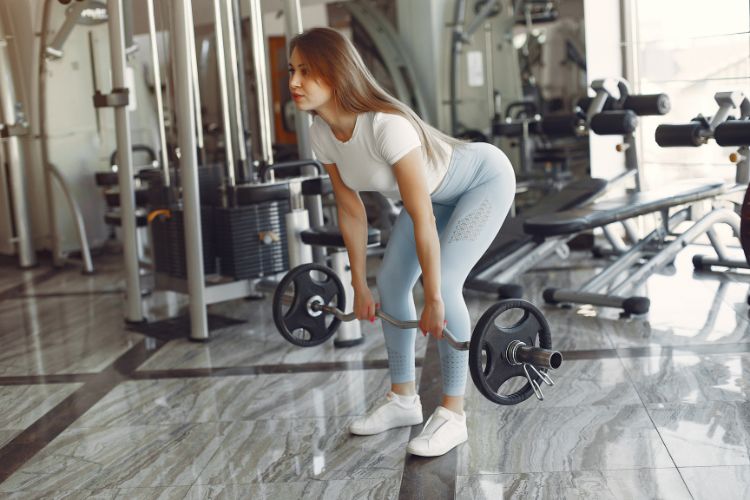Sign up for workout ideas, training advice, reviews of the latest gear and more.






In recent years, the fitness industry has seen a remarkable shift towards promoting inclusivity and diversity. Women, in particular, have become increasingly interested in resistance training to build strength, boost their confidence, and improve overall health. Full body resistance training has emerged as a fantastic option for women looking to transform their bodies and minds. In this blog post, we will delve deep into the world of full body resistance training for women, exploring its benefits, debunking myths, providing workout routines, and offering practical tips for success. Whether you’re new to the gym or a seasoned fitness enthusiast, this guide is tailored to help you achieve your goals and empower you to take charge of your fitness journey.
One of the most significant advantages of full body resistance training for women is its ability to help build lean muscle and tone the body. Contrary to a prevalent myth, lifting weights won’t make you bulk up like a bodybuilder. Instead, it promotes muscle growth, which can give you a sculpted and toned appearance. The hormone testosterone, responsible for significant muscle mass gains, is typically much lower in women than in men, making it difficult for women to achieve a bulky physique through resistance training alone.
Full body resistance training can be a game-changer for women looking to shed unwanted body fat. Muscle tissue is more metabolically active than fat tissue, meaning that the more muscle you have, the more calories your body burns at rest. This phenomenon, known as the “afterburn effect” or excess post-exercise oxygen consumption (EPOC), can help you increase your metabolism and accelerate fat loss. So, not only will you look better, but you’ll also be burning calories even when you’re not working out.
Women are more prone to osteoporosis than men, making bone health a critical concern. Full body resistance training is an excellent way to enhance bone density, reducing the risk of fractures and osteoporosis. Weight-bearing exercises like squats, deadlifts, and lunges stimulate bone remodeling and strengthen your skeletal structure, which is particularly important for women as they age. It’s never too early to start working on your bone health, and resistance training can be a pivotal component of a proactive approach.
Many women shy away from resistance training due to concerns about joint health. However, when done correctly, resistance training can actually improve joint health by strengthening the muscles and ligaments that support them. It’s essential to prioritize proper form and technique to prevent injuries. If you’re new to resistance training, consider seeking guidance from a certified personal trainer to ensure you’re performing exercises safely and effectively.
Exercise, including full body resistance training, has been shown to have a positive impact on mental health. When you work out, your body releases endorphins, which are natural mood lifters. The sense of accomplishment and empowerment that comes with strength training can also boost your self-esteem and reduce stress. As a woman, juggling various roles and responsibilities, incorporating resistance training into your routine can be a valuable tool for maintaining emotional well-being.
Full body resistance training doesn’t just improve your appearance; it also enhances your everyday functionality. Stronger muscles mean you’ll have an easier time performing daily tasks like carrying groceries, lifting children, and even improving your posture. As women, it’s important to maintain functional strength to stay active and independent throughout our lives.
Perhaps one of the most empowering aspects of full body resistance training for women is breaking stereotypes. It challenges the outdated notion that women should focus solely on cardio or lightweights. Women who embrace resistance training prove that they can be strong, confident, and unapologetically themselves. It’s an opportunity to shatter societal expectations and redefine beauty and strength on your own terms.
Debunking Myths About Full Body Resistance Training
As mentioned earlier, the fear of getting bulky is a common misconception among women considering resistance training. However, this myth is rooted in a misunderstanding of how muscle growth works. Women have lower levels of testosterone, a hormone responsible for significant muscle gains, compared to men. This hormonal difference makes it extremely challenging for women to bulk up like bodybuilders naturally. Instead, resistance training will help you develop lean muscle mass, leading to a toned and sculpted physique.
Another prevailing myth is that cardio is the superior option for weight loss, while resistance training is best for building muscle. In reality, both cardio and resistance training can contribute to weight loss, but they do so in different ways. Cardio burns calories during the workout, while resistance training boosts your metabolism, allowing you to burn more calories at rest. Combining both types of exercises in your fitness routine can yield the most effective weight loss results.
Age should never be a barrier to embracing full body resistance training. In fact, resistance training becomes increasingly essential as you age. It helps maintain bone density, muscle mass, and functional strength, all of which can improve your quality of life as you get older. Whether you’re in your 20s or your 60s, it’s never too late to start reaping the benefits of resistance training.
Full Body Resistance Training Workouts for Women
Now that we’ve explored the numerous advantages of full body resistance training and debunked some common myths, let’s dive into practical workout routines that can help you achieve your fitness goals. Keep in mind that it’s crucial to tailor your workouts to your current fitness level and progressively challenge yourself as you become stronger.
If you’re new to resistance training, this beginner’s routine is an excellent place to start. It focuses on fundamental movements to help you build a strong foundation.
Perform this routine 2-3 times a week, allowing at least one rest day in between workouts. Focus on proper form and gradually increase the weight or resistance as you become more comfortable with the exercises.
For those who have some experience with resistance training, this intermediate routine will help you progress and continue building strength.
Perform this routine 3-4 times a week, with at least one rest day between workouts. Gradually increase the weight or resistance to keep challenging your muscles.
For those who have mastered the basics and want to take their full body resistance training to the next level, this advanced routine is designed to provide a serious challenge.
Perform this routine 4-5 times a week, allowing ample rest between workouts. Ensure you maintain proper form, and consider working with a personal trainer to fine-tune your technique and track your progress.
Practical Tips for Success in Full Body Resistance Training
Before starting any full body resistance training program, it’s essential to set clear and achievable goals. Do you want to build strength, lose weight, or simply improve your overall fitness? Having specific objectives will help you stay motivated and track your progress effectively.
Proper form is paramount in resistance training to prevent injuries and maximize results. If you’re unsure about your technique, consider working with a certified personal trainer who can guide you through the correct movements. Remember, it’s better to lift lighter weights with perfect form than to lift heavy weights with poor form.
As you become more comfortable with your workouts, aim to progressively increase the intensity by adding more weight, resistance, or repetitions. This gradual progression is what stimulates muscle growth and keeps your workouts challenging.
Allowing your body to recover is crucial for muscle growth and overall well-being. Ensure you get enough sleep, stay hydrated, and consume a balanced diet rich in protein, which is essential for muscle repair and growth. Don’t forget to include rest days in your workout routine to give your muscles time to recover and reduce the risk of overtraining.
Consistency is the key to success in full body resistance training. Stick to your workout schedule, even on days when motivation is low. Remember that progress may be gradual, but each small step you take brings you closer to your goals.
Full body resistance training offers women a host of benefits, from building lean muscle and burning fat to enhancing bone density and boosting confidence. By dispelling common myths and providing practical workout routines and tips, this guide empowers women of all ages and fitness levels to embark on a transformative journey toward a stronger, healthier, and more confident self. Embrace the power of resistance training and redefine what it means to be a strong and capable woman in today’s world. Your journey to a more confident and empowered you begins now.
Stay up to date on the latest women’s health, fitness and lifestyle trends and tips.